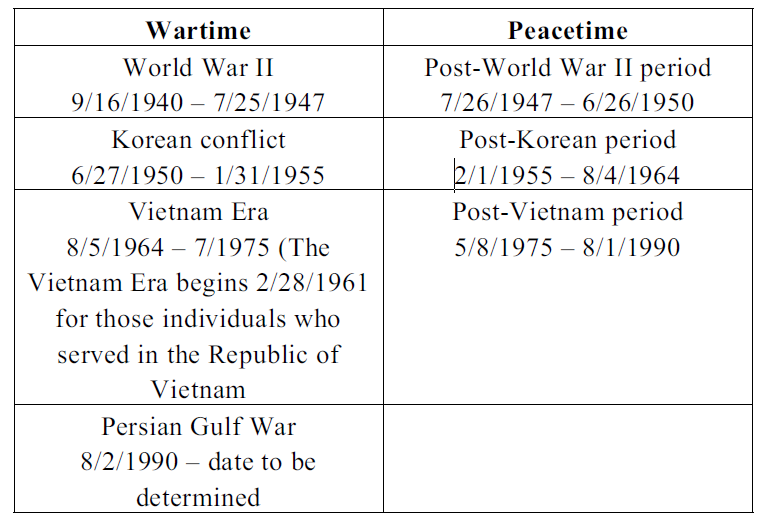VA Loan Entitlement Options for Military Couples Are you and your spouse both serving—or have…
ABC’s of a VA Loan
ABC’s of a VA Loan
ABC’s of a VA Loan
Military service can disrupt the individual’s financial stability — that’s the reality that the United States government confronted even before World War II was over. To help soldiers transition to peacetime, a homeownership program was implemented.
Since the inception of the United States Department of Veterans Affairs (VA) loan program more than 70 years ago, millions of veterans and service members have become homeowners. The VA loan program has proven to be robust, even in the wake of events such as the 2008 financial crisis.
Yet only 15 percent of the nation’s 22 million veterans have taken advantage of the program. According to the Veterans Administration, about one-third of veterans aren’t aware that the program exists.
The VA Loan
The VA Loan program isn’t a direct loan to veterans; it’s a financial guaranty that provides certainty to private, VA-approved lenders, in order to encourage them to extend the loan. The government backing is accompanied with several additional benefits to ease the journey towards home ownership.
Those benefits include:
- No Down Payment
This major benefit means veterans can own a home without saving a hefty amount for the down payment. For conventional loans, a down payment ranging from five to 20 percent of the cost of the property is usually required.
- No Private Mortgage Insurance
For a down payment of less than 20 percent, lenders usually require that the borrower has a form of private mortgage insurance, with the insurance fees added to the monthly mortgage payment. No PMI is required for a VA loan.
- Low-Interest Rates
Interest rates for VA loans are usually below conventional loan rates by .5 percent to 1 percent. Together with the waived requirement for private mortgage insurance, that means significantly lower monthly mortgage payments.
- No Prepayment Penalties
Conventional loans can be subject to a penalty if the mortgage is paid off early. It’s illegal for a lender to charge the penalty on a VA loan.
- Less Stringent Qualification Guidelines
The bar is high for credit requirements for conventional loans and since the subprime mortgage crisis of 2008 has become even more challenging to meet. Typically, for the best interest rates and terms, the lender looks for a credit score in the mid-700s. About eight in 10 VA borrowers wouldn’t qualify for a conventional loan.
The credit score requirements for VA loans is considerably more flexible, with lenders looking for a “fair” credit score — around 620 is sufficient. In cases where serious financial setbacks, such as a bankruptcy, have marred the borrower’s record, the required waiting period is shorter.
- Low Closing Costs
Home buyers are faced with a variety of costs to close the purchase, such as administrative costs for the loan, appraisal fees, and inspection fees.
The VA limits the amount that lenders can charge borrowers. That allows the seller to pay all the loan-related closing costs and up to four percent of the cost of the property in concessions. The seller isn’t required to pay the costs; these costs and concessions must be negotiated.
Eligible Property
The VA loan is available to purchase a residence that will be owned and occupied by the veteran. The loan can be used to refinance a VA-guarantied home or direct loan for a lower interest rate; to make energy-efficient improvements in conjunction with a VA loan or refinancing; to refinance the loan for the veteran to have more cash on hand; or to purchase up to four one-family residential units in a VA-approved condo development.
Usually, you must occupy the property within 60 days of the purchase.
Ineligible Property
The VA loan isn’t intended for vacation homes or investment properties. It can’t be accessed to buy land with the intention of building a house later; there must be a house associated with the property.
There are also restrictions about combining residential and business properties. Generally, the business should occupy no more than 25 percent of the total floor space.
Residences that aren’t similar to others in the area may not be eligible, as it’s difficult to obtain an accurate assessment in the context of the neighborhood. It’s also more difficult to access VA loans for new construction.
While a manufactured home is eligible for a VA loan if it has a permanent foundation, it’s unlikely that a lender will approve financing for it.
Loan Limits
The VA loan covers up to one-quarter of the cost of the borrower’s mortgage — that is, the government promises the lender that 25 percent of the mortgage will be recovered if the borrower defaults. The basic entitlement amount for a veteran is currently $36,000. That means a property that costs up to $144,000 can be purchased.
Since average housing costs are higher in different parts of the country, a secondary entitlement of $68,250 has been created, so that veterans aren’t excluded from home ownership in those areas. This secondary entitlement can be accessed for mortgages exceeding $144,000. The maximum entitlement available for a guaranty for the VA loan would be the basic amount plus the secondary amount — a total of $104,250. That allows the veteran to purchase property that costs as much as $417,000.
What About the Lender?
You need to be eligible and the property needs to meet the criteria to be approved for the VA loan. But the lender still has to approve the loan and not everyone who qualifies for the VA loan will qualify for a mortgage.
Lenders will assess each prospective borrower application according to their unique financial situation, the property itself, and other factors. While the VA loan helps remove obstacles and adds a degree of confidence to the lender about the borrower, your credit history and income will still be thoroughly reviewed before your mortgage application can be approved.




